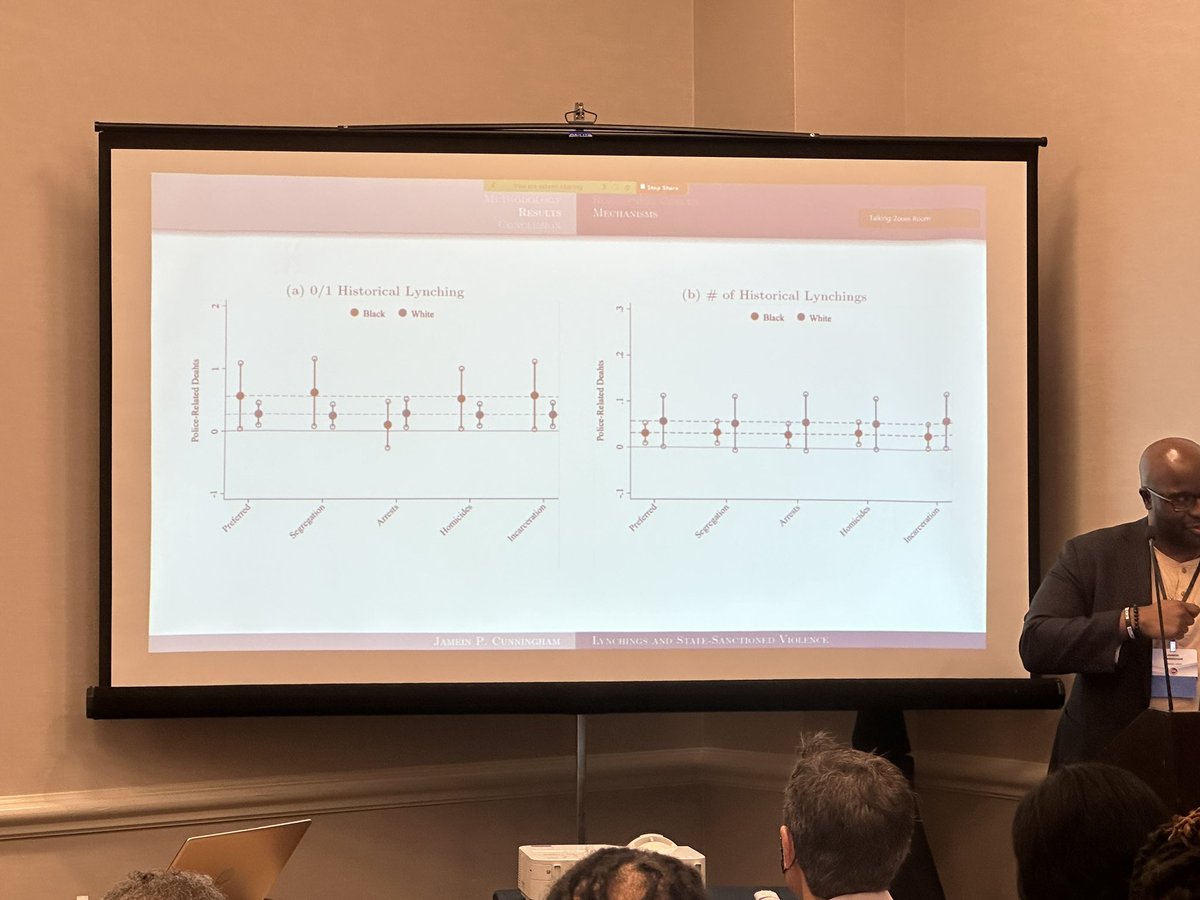At #ASSA2023, excited to see @DrJPCunningham present our work (joint with @jhacova @RobynnCox @BjuggrenCarl @TrevonDLogan) on the relationship between historical lynchings and police killings today. Our goal: explaining persistent spatial differences, which are pronounced. 

We use historical lynchings because they capture not only racial animus, but also institutional features (law enforcement, political institutions) that can lead to racial disparities in police violence today (lynchings and police killings not prosecuted). 

We use @drlisadcook’s tremendous (and comprehensive!) national lynching data, which covers all racial groups from the 17th century! We also use fatal encounters, mapping police violence, and Washington Post data. At baseline, more police killings where there were more Lynchings. 



We see large spatial differences in the numbers of Black and White lynchings and where they occurred. (Same for other racial groups.) How are these patterns related to police killings today? 



At both the extensive and intensive margins, more lynchings are related to more police killings today. Number of lynchings matters more for Whites. When we control for population, contemporary controls, etc. The results for Black lynchings and police killings is quite robust. 



Mechanisms? We look at arrests, homicides, and criminal legal involvement among Black people and find that these are related to Black Lynching intensity. The system is different in places with more historical Black lynchings. This relationship does not hold with White lynchings. 



We look at contemporary arrests, homicides, incarceration, segregation (Logan-@jmparman measure), and again the result is robust. We conjecture that historical Black lynchings are related to police contact, and this is established routinized practice related to lynching intensity 



This has been a great project to work on and we appreciate the help of @VincentPancini as an RA on this project. Our results are still very preliminary and we continue to refine the project going forward. Excited to hear Sam Myers, Jr.’s discussion!
• • •
Missing some Tweet in this thread? You can try to
force a refresh






